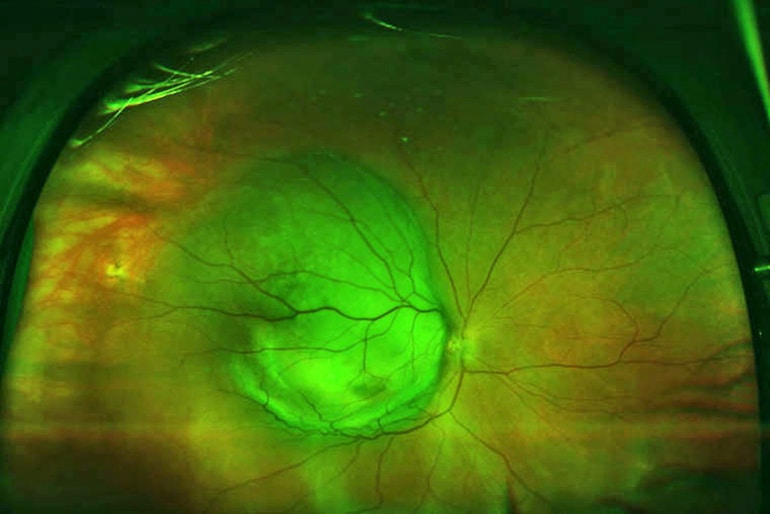In human cells grown in the lab, a natural plant compound halts the overactive signaling that drives growth of uveal melanoma, a cancer of the eye, researchers report.
Uveal, or ocular, melanoma arises from the layer of pigmented cells of the eye that includes the iris. Fatal in about half of the patients who develop it, the cancer represents about 3 to 5 percent of all melanoma cases.
Unlike skin melanoma, uveal melanoma is not strongly linked to exposure to ultraviolet light, although, people with blue eyes and fair skin are at highest risk of developing the disease researchers say.

“In about half of patients, this tumor metastasizes to other organs and grows aggressively,” says Kendall J. Blumer, professor of cell biology and physiology at Washington University in St. Louis and senior author of the paper, which appears in Science Signaling.
“Skin melanoma now has a number of relatively new targeted therapies, including immune therapies that prolong survival, even after tumors have spread. Unfortunately, these treatments don’t seem to do much against uveal melanoma. So there is a need for new therapeutics in this specific type of tumor.”
A simple solution?
Scientists have been studying the signaling molecules that are overactive in uveal melanoma for a decade but have had little clinical success in shutting them down.
The overactive protein commonly found in this specific type of melanoma is called G alpha q, and it is part of a class of molecules called G proteins. When such proteins develop genetic errors that permanently switch them on, cancer can result.
In its active state, G alpha q is bound to another molecule that keeps it turned on and the signaling cascade flowing all the time. In the search for therapies in uveal melanoma, scientists have tried many different strategies to shut down individual pieces of the cascade activated by G alpha q. Thus far, no approach has succeeded in helping patients with the disease.
The new findings suggest a solution that is surprising in its simplicity.
Rather than turning off parts of the cascade thatG alpha q activates, the scientists showed they could simply wait for G alpha q to release the molecule that keeps it active. This random split happens at a low rate, but if a drug is present that can trap G alpha q in its inactive state, the researchers thought that the entire cancer-causing signaling cascade would gradually shut down, one protein at a time.
The researchers found that a natural compound called FR900359 (FR)—present in a member of the primrose family of plants—does just that.
“This plant compound binds tightly to inactive G alpha q, trapping it in its deactivated state,” Blumer says. “When the cancer-causing form of G alpha q just happens to switch off on its own, FR traps it there.”
On and off
“In our study, we showed that the cancer-causing form of G alpha q doesn’t have to be turned off by force,” says first author Michael D. Onken, assistant professor of biochemistry and molecular biophysics. “It just turns itself off every now and then on its own. But it then can be locked down with FR, and that’s enough to shut down tumor cell growth.”
Indeed, the researchers showed that FR not only kills human uveal melanoma cells growing in the lab, it also appeared to revert a subset of those cells back to a state resembling normal pigmented cells of the eye.
G proteins are common throughout the body, so finding ways to deactivate them also could be potentially relevant for other disorders, including cholera and Sturge-Weber Syndrome, a neurological disorder that often causes seizures and muscle weakness, he researcher say.
Evidence also links such proteins to common disorders affecting large numbers of people, including asthma and high blood pressure.
Researchers are now planning to test whether the FR compound can treat uveal melanoma in mouse models of the disease.
Siteman Cancer Center, Pedal for the Cause, and the National Institutes of Health funded the work.



